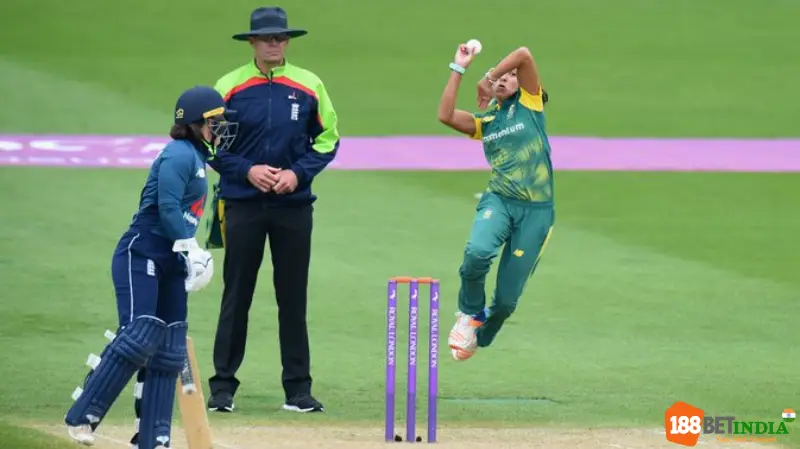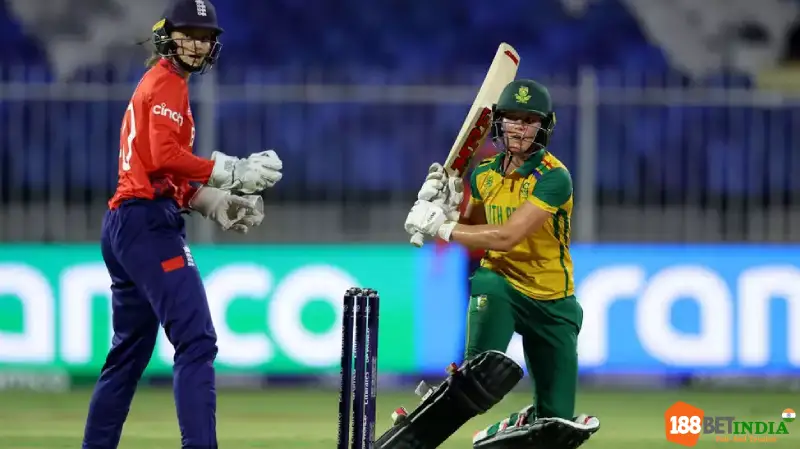In a high-stakes Women’s T20 World Cup group match, South Africa Women and England Women locked horns in Sharjah, with England walking away victorious by seven wickets. The clash, marked by contrasting approaches to batting orders and role clarity, exposed South Africa’s ongoing experimentation at the No. 3 spot, which ultimately hurt them. England, meanwhile, were clinical, showing the value of stability and clear roles in their setup.

South Africa’s No. 3 Conundrum
South Africa’s batting struggles have often revolved around the No. 3 position, and this game was no different. Anneke Bosch, promoted to bat one-down, failed to make the impact her team needed. It was only recently that Bosch was thrust into the No. 3 role, a decision that followed some success in Pakistan, but the conditions in Sharjah proved far more challenging.
Traditionally, Marizanne Kapp has filled that crucial No. 3 spot for South Africa with great success, amassing over 850 runs in the role. However, with Kapp being rested for parts of the Pakistan series, the team management decided to try Bosch at one-drop, a move that hasn’t yielded consistent results. Against England, Bosch’s inability to rotate strike and score freely allowed England’s bowlers, particularly their spinners, to take control of the middle overs.
South Africa’s openers, Laura Wolvaardt and Tazmin Brits, had laid a decent foundation, but Bosch’s slow knock meant that South Africa found themselves stuck in the middle overs, going seven overs without a boundary. By the time Kapp arrived at the crease for her brisk 24 off 17 balls, the damage had already been done, and South Africa’s score of 124/4 felt at least 20 runs short.
England’s Stability and Role Clarity
In stark contrast, England Women showcased a well-oiled machine, with each player clearly understanding their role in the team. After losing their first wicket in the fifth over, England didn’t panic. Instead, they turned to Alice Capsey, who, despite not setting the scoreboard on fire, contributed a valuable 16-ball 19, which helped accelerate England’s innings when they were behind South Africa’s powerplay score.
Capsey’s cameo allowed Danni Wyatt-Hodge and Nat Sciver-Brunt to take their time in building the innings, confident that the required run-rate was still manageable. South Africa’s bowlers, led by Kapp and Ayabonga Khaka, bowled tightly with the new ball, but England’s patience and role clarity helped them weather the storm.
Once Capsey launched Chloe Tryon over the boundary for a six, it was clear that England were in control. From there, it was smooth sailing for the chasing side, with Sciver-Brunt’s assured presence at the crease ensuring England didn’t falter.
Experimentation Costs South Africa
South Africa’s experiment with the No. 3 position has yet to pay off. Bosch’s struggles in the role could be attributed to the challenging conditions in Sharjah, where the two-paced track made shot-making difficult. However, the broader issue is the lack of stability and role definition in South Africa’s batting order.
Captain Laura Wolvaardt admitted after the match that the team is open to changes and that Bosch’s promotion to No. 3 was something batting coach Baakier Abrahams had been contemplating. Wolvaardt’s comments suggest that the team is still figuring out their best combination, but the constant shuffling is costing them momentum in critical phases of the game.
In contrast, England’s clear strategy and defined roles gave them the edge. England bowled with discipline, using spin effectively, and their batters paced the chase perfectly. Capsey’s timely acceleration and Sciver-Brunt’s composure highlighted the importance of having a set plan and sticking to it, something South Africa will need to develop if they hope to progress further in the tournament.
FAQs
Alice Capsey played a crucial role for England, helping them accelerate in the middle overs and set the stage for a successful chase. Her 16-ball 19 came at a critical juncture, allowing England to take control.
South Africa’s middle-order struggled to build on the solid foundation laid by their openers. Anneke Bosch, batting at No. 3, failed to rotate strike, and the lack of boundaries in the middle overs hurt their momentum.
England’s chase was anchored by a clear strategy and calm execution. Tight bowling from South Africa put pressure on England early, but Alice Capsey and Nat Sciver-Brunt ensured that England stayed on track, with Capsey playing a key role in raising the run-rate.
South Africa may consider reinstating Marizanne Kapp at No. 3, a position where she has been highly successful. The team needs more stability in the batting order, especially in challenging conditions like those in the UAE.
England will look to continue their strong run in the tournament, while South Africa will need to reassess their strategy and batting order if they want to make it past the group stage.

Conclusion
The clash between South Africa Women and England Women highlighted the importance of role clarity and stability in a team. While South Africa’s experimentation with their batting order, particularly at No. 3, backfired, England’s well-defined roles and calm execution helped them cruise to a seven-wicket win.
For South Africa, it’s time to go back to the drawing board and reconsider their approach to the No. 3 position. With two tough group fixtures out of the way, they still have time to recover and make it to the knockout stages. However, as their captain rightly pointed out, they need to embrace stability, especially in challenging batting conditions.
As for England, they continue to show why they are one of the most formidable teams in women’s cricket. With players like Alice Capsey and Nat Sciver-Brunt stepping up when needed, they look poised for a deep run in the tournament.
